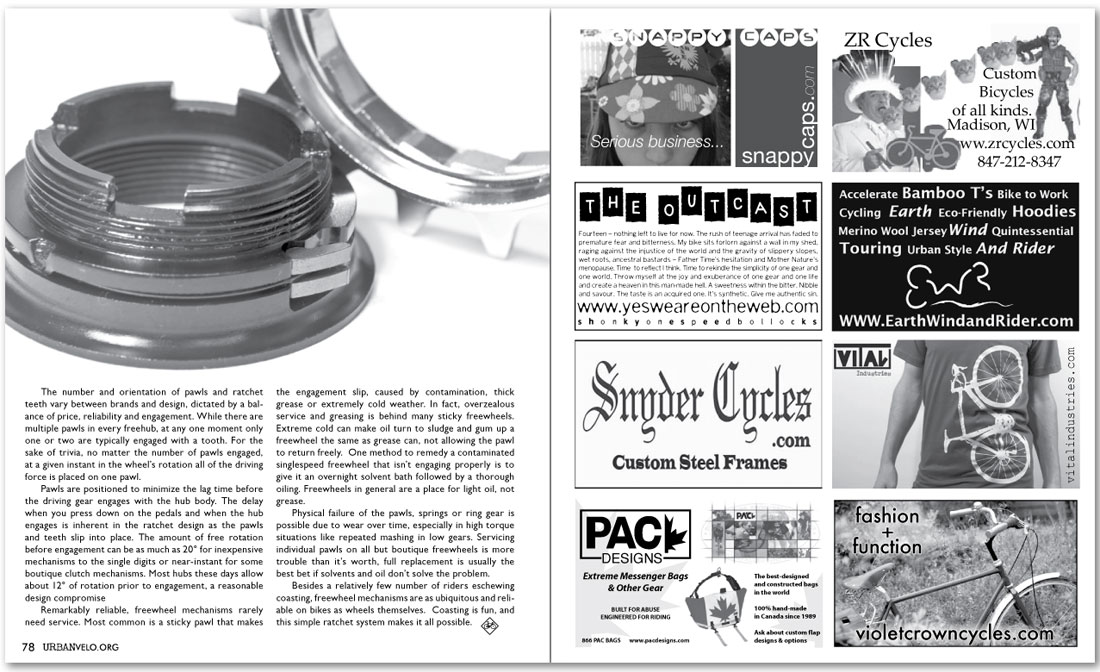

|
|||
| The number and orientation of pawls and ratchet teeth vary between brands and design, dictated by a balance of price, reliability and engagement. While there are multiple pawls in every freehub, at any one moment only one or two are typically engaged with a tooth. For the sake of trivia, no matter the number of pawls engaged, at a given instant in the wheel’s rotation all of the driving force is placed on one pawl. Pawls are positioned to minimize the lag time before the driving gear engages with the hub body. The delay when you press down on the pedals and when the hub engages is inherent in the ratchet design as the pawls and teeth slip into place. The amount of free rotation before engagement can be as much as 20° for inexpensive mechanisms to the single digits or near-instant for some boutique clutch mechanisms. Most hubs these days allow about 12° of rotation prior to engagement, a reasonable design compromise. Remarkably reliable, freewheel mechanisms rarely need service. Most common is a sticky pawl that makes the engagement slip, caused by contamination, thick grease or extremely cold weather. In fact, overzealous service and greasing is behind many sticky freewheels. Extreme cold can make oil turn to sludge and gum up a freewheel the same as grease can, not allowing the pawl to return freely. One method to remedy a contaminated singlespeed freewheel that isn’t engaging properly is to give it an overnight solvent bath followed by a thorough oiling. Freewheels in general are a place for light oil, not grease. Physical failure of the pawls, springs or ring gear is possible due to wear over time, especially in high torque situations like repeated mashing in low gears. Servicing individual pawls on all but boutique freewheels is more trouble than it’s worth, full replacement is usually the best bet if solvents and oil don’t solve the problem. Besides a relatively few number of riders eschewing coasting, freewheel mechanisms are as ubiquitous and reliable on bikes as wheels themselves. Coasting is fun, and this simple ratchet system makes it all possible. |
|
|